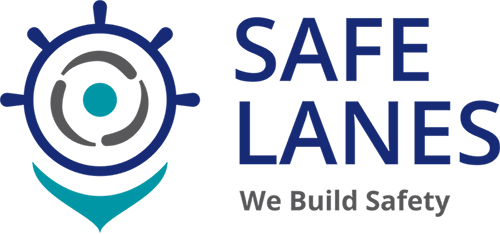
Routine Analysis of Voyage Data Recorder
As effective evaluation of navigational standards is the key for safe navigation
By Rachit Jain – Safe Lanes
A ship spends majority of its time underway at sea where navigation is the principle activity being undertaken. Despite advancement of navigational aids and bridge training, a risk of navigational incident still remains one of the major concerns for charterers, ship owners and ship managers.
Although the techniques for safe navigation are well known, their execution widely depends on the professionalism of the bridge team, which may alter with the change in navigational conditions.
There is no regulatory requirement to assess the effectiveness of the bridge team. However,industry standards such as Tanker Management Self-Assessment (TMSA), requires tanker managers to perform various types of navigational audits on board their managed vessels. Furthermore, such requirement is now also becoming more common in other vessel trades e.g. bulk carriers.
Some of the advantages of navigation audit
includes:
- Compliance check with regulatory
requirements and company procedures
- Assessment of bridge team skills –
competency and human factor
- Assessment of operation of various bridge equipment
- Assessment of bridge team communication – internal / external
- Assessment of Master-Pilot exchange
- Review of bridge records
- On board training & coaching
A meaningful navigation audit, along a voyage, is essential to assess the bridge team practices and to continuously enhance navigational standards. However, in this auditing style critical findings such as situational awareness, team work,leadership, etc., may not highlight which otherwise becomes prominent when bridge team is in operation with no supervision.
How can a company effectively capture the true status of on-board
navigation assessment?
A STRATEGIC PLANNING OF COMBINING NAVIGATIONAL ASSESSMENT WITH UNANNOUNCED ANALYSIS OF VDR DATA IS THE KEY TO ESTABLISH THE TRUE REPRESENTATION OF ONBOARD NAVIGATIONAL STANDARD.

Statistical analysis of over 1000+ navigational assessments and VDR analysis highlights that there is a varied difference in the types of findings that arises from these two types of audits.
While the findings from navigation assessments are inclined more towards record keeping and navigational practices, the findings from VDR analysis indicates Bridge team behavior and master-pilot exchange as common challenges
towards safety of navigation. Based on statistics, it may be fair to comment
that the presence of an auditor on the bridge alters the environment in which the bridge team would otherwise function. With the auditor, the bridge team would cautiously operate, giving less opportunity to identify behavioural issues (soft skills).
An unannounced routine analysis of VDR data identifies with accuracy, departure from
regulatory requirements, bridge team behavioral tendencies, level of situational awareness and other events that deserve management attention.
An element of surprise reinforces positive safety culture to reduce errors, minimize risk and enhance overall human performance. It further assists in providing customized coaching for performance enhancement.
While the navigation assessment helps to assess the bridge team performance in real time, unannounced VDR analysis helps to assess the same bridge team in real environment. VDR analysis complements existing methods of navigational audits and when effectively conducted, can be a valuable tool to lower navigation related incidents.

